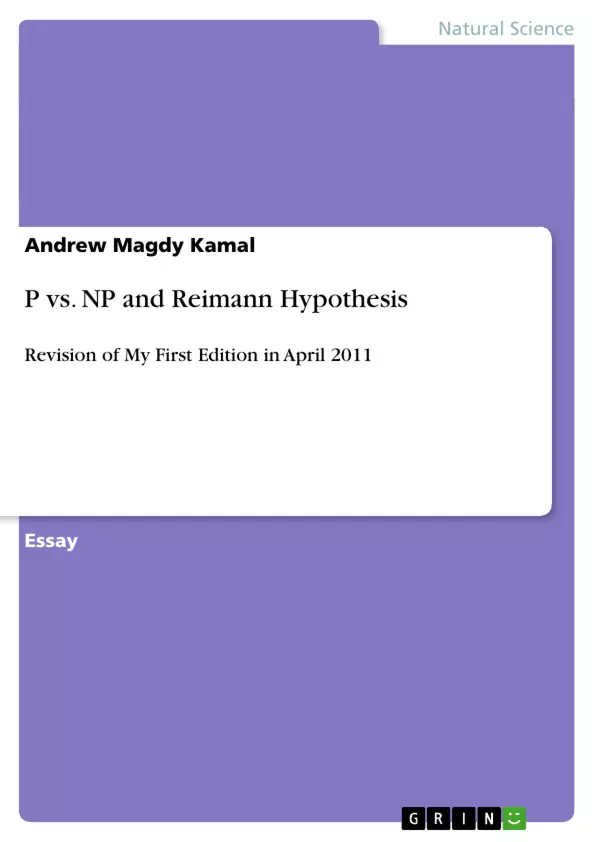This problem has been solved by me over a year ago, and published. Today I am posting a more complex and complicated version, yet put in Layman terms. I hope by doing this it will garner the attention of Clay Mathematics as well as show logical input on its mathematical endeavors.
Inhaltsverzeichnis (Table of Contents)
- Answers and Proofs to Two Millennium Prize Problems
- The P vs. NP Problem
- The Riemann Hypothesis
Zielsetzung und Themenschwerpunkte (Objectives and Key Themes)
This work presents purported solutions to two Millennium Prize Problems: the P vs. NP problem and the Riemann Hypothesis. The author aims to demonstrate their logical approach to these long-standing mathematical challenges and provide solutions they believe are comprehensible and verifiable.- The nature of complexity and its implications for computational problems
- The relationship between polynomial-time algorithms and the P vs. NP problem
- The distribution of prime numbers and the significance of the Riemann Zeta function
- The potential for an infinite continuation of the Riemann Zeta function
- The role of visualization and graphical representation in understanding mathematical concepts
Zusammenfassung der Kapitel (Chapter Summaries)
Answers and Proofs to Two Millennium Prize Problems
This chapter introduces the author's claim of having solved the P vs. NP problem and the Riemann Hypothesis. The author provides a brief overview of the challenges posed by these problems and outlines their approach to finding solutions.The P vs. NP Problem
This chapter presents the author's solution to the P vs. NP problem using a combinatorial approach based on the number of possible student combinations and incompatible pairs. The author argues that this approach aligns with the concept of polynomial-time algorithms and suggests a connection between P and NP in the context of computer programming.The Riemann Hypothesis
This chapter focuses on the Riemann Hypothesis and its relation to the distribution of prime numbers. The author suggests that if the Riemann Hypothesis is true, the Zeta function must be infinite due to the continuing frequency of prime numbers. They present graphical representations of the Zeta function and argue that its behavior supports the idea of an infinite continuation.Schlüsselwörter (Keywords)
The primary focus of this text is on the Millennium Prize Problems, specifically the P vs. NP problem and the Riemann Hypothesis. The author uses a range of mathematical concepts and terms, including polynomial-time algorithms, combinatorial analysis, prime numbers, the Riemann Zeta function, infinite continuation, and graphical representation. Their work also touches on the relationship between mathematics and computer science, particularly in the context of computational complexity.
Excerpt out of 5 pages
- scroll top
- Quote paper
- Andrew Magdy Kamal (Author), 2011, P vs. NP and Reimann Hypothesis, Munich, GRIN Verlag, https://www.hausarbeiten.de/document/230366
Look inside the ebook


